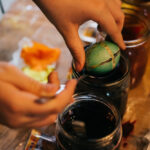If you’re just getting into kava or looking to expand your tasting journey, understanding the differences between regional varieties is a great place to start. From bold and earthy to smooth and creamy, each island brings its own character to the table. Whether you’re using traditional root powder or kava extract, the flavor and strength will depend a lot on where your kava comes from.
Kava extract is a concentrated form often used for convenience. But knowing the source of your kava helps you pick what suits your personal taste. Each region grows and processes kava a little differently, and this influences both the taste and the experience.
Vanuatu Kava – The Original Powerhouse
Vanuatu is widely seen as the birthplace of kava. This island nation has hundreds of cultivars, and many of them are known for their bold flavor. If you like a strong, earthy taste and don’t mind a thicker texture, Vanuatu kava may be your ideal match. It’s great for those who want to explore traditional, robust kava.
Fijian Kava – Smooth and Mild
Fiji offers a completely different take. Fijian kava tends to be smoother, milder, and less intense on the tongue. It has a lighter color and is often preferred by beginners or those who want a subtle flavor. It’s a good starting point if you’re new to the kava world or just want something easy to sip.
Tongan Kava – The Balanced Middle Ground
Tongan kava sits nicely between Vanuatu and Fiji in terms of strength and taste. It’s neither too bold nor too light. If you’re looking for balance, this could be your go-to option. Tongan kava is clean in flavor and not too heavy in texture. Many enjoy it for regular drinking sessions, thanks to its smooth yet firm profile.
Solomon Islands Kava – Rich and Full-Bodied
Solomon Islands kava offers a deeper, richer flavor. It often has a slightly complex taste that seasoned drinkers can appreciate. This variety is for those who enjoy layered profiles and want to try something more full-bodied. It’s not the lightest kava around, but its richness is worth exploring.
Samoan Kava – Creamy and Subtle
Samoan kava is known for its creamy mouthfeel and subtle taste. It’s one of the most refined varieties and often preferred for its smooth, easy-to-drink qualities. If you don’t like the strong earthiness of Vanuatu kava, you might find Samoan kava more enjoyable. It has a pleasant texture and a lighter taste profile that makes it easy on the palate.
Choosing Based on Taste Preference
Each region offers something different. If you like bold and earthy, go for Vanuatu. For a light and smooth drink, Fiji or Samoa might be better. Tongan gives you a good balance, while Solomon Islands kava is rich and slightly more complex. Taste matters more than anything when picking your favorite, especially if you’re mixing it with water or taking it as a kava extract.
Preparation Methods Matter Too
How you prepare your kava also affects its taste. Some people prefer traditional cold water preparation. Others use instant kava, which dissolves quickly and skips the straining process. Instant kava is fast and easy, especially if you’re new or just short on time. But again, knowing the source will help you choose a product that matches your taste preference.
There’s no one-size-fits-all when it comes to kava. Your perfect match depends on your flavor preference, texture comfort, and even how you like to prepare your drink. Start with one region and explore from there. The journey is part of the fun. Whether you go bold with Vanuatu or smooth with Samoa, each cup tells a story.

